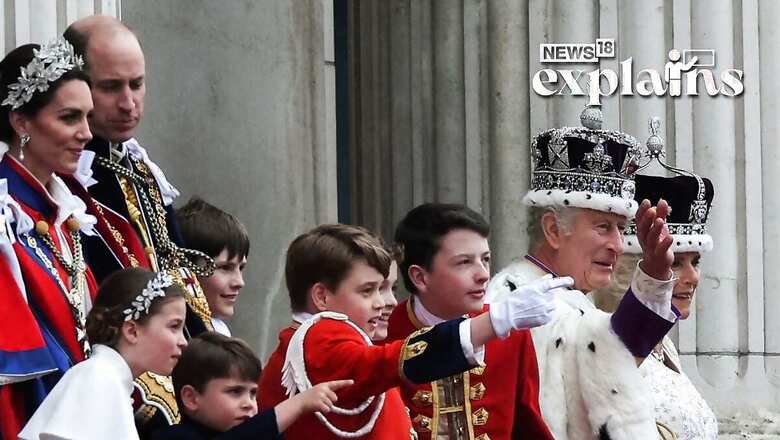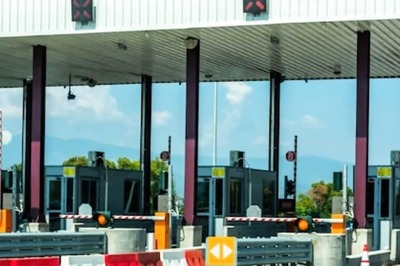
views
Charles III was crowned monarch of the United Kingdom and 14 Commonwealth realms on Saturday at Britain’s first coronation for 70 years, during a ceremony steeped in a millennium of ritual and spectacle.
Charles, 74, became the oldest sovereign yet to be crowned at London’s Westminster Abbey, after a lifetime as heir to his late mother Queen Elizabeth II.
Welby also crowned Charles’s wife, Camilla, 75, capping a remarkable transformation from her position as a one-time royal mistress to “queen consort”, and now queen.
ALSO READ | British Royal Family: King Charles III’s Family and The Order of Succession | In GFX
Let’s understand who will become King after Charles, and how the monarchy’s line of succession is determined:
The groundwork for succession was established throughout the seventeenth century constitutional processes, which culminated in the Bill of Rights (1689) and the Act of Settlement (1701), according to the official Royal Family website.
When James II fled the nation in 1688, Parliament declared that he had ‘abdicated the government’ and that the crown had become empty. The throne was thus offered as joint rulers to James’s daughter Mary and her husband William of Orange, rather than his young son James.
It was therefore established not only that the Sovereign rules via Parliament, but also that the succession to the throne can be limited by Parliament and that a Sovereign might be deposed for misgovernment. The Act of Settlement confirmed that the title to the throne was determined by Parliament. The succession to the king is governed not just by descent, but also by Parliamentary legislation. The sequence of members of the Royal Family in the order in which they stand in line to the throne is known as the order of succession.
Only Protestant descendants of Princess Sophia, Electress of Hanover and granddaughter of James I, are eligible to succeed, according to the Act. This has been reinforced by subsequent Acts.
Parliament also established various conditions that the Sovereign must meet in the Bill of Rights and the Act of Settlement. A Roman Catholic is expressly barred from succeeding to the throne.
In addition, the Sovereign must be in communion with the Church of England and promise to uphold the established Church of England and the established Church of Scotland. In addition, the Sovereign must swear to safeguard the Protestant succession, the website explains.
The Succession to the Crown Act (2013) revised the Bill of Rights and the Act of Settlement to abolish the concept of male primogeniture, which allowed a younger son to displace an elder daughter in the line of succession. The Act applies to those born after October 28, 2011. The Act also repealed the regulations that barred persons who married Roman Catholics from the line of succession. In March 2015, the adjustments went into effect throughout all sixteen Realms.
Here is the line of succession, according to the Royal Family website:
The line of Succession
SOVEREIGN
- The Prince of Wales
- Prince George of Wales
- Princess Charlotte of Wales
- Prince Louis of Wales
- The Duke of Sussex
- Prince Archie of Sussex
- Princess Lilibet of Sussex
- The Duke of York
- Princess Beatrice, Mrs. Edoardo Mapelli Mozzi
- Miss Sienna Mapelli Mozzi
- Princess Eugenie, Mrs. Jack Brooksbank
- Master August Brooksbank
- The Duke of Edinburgh
- Earl of Wessex
- The Lady Louise Mountbatten-Windsor
- The Princess Royal
- Mr. Peter Phillips
- Miss Savannah Phillips
- Miss Isla Phillips
- Mrs. Michael Tindall
- Miss Mia Tindall
- Miss Lena Tindall
- Master Lucas Tindall
Prince Harry, Andrew Relegated to Third Row
Princes Harry and Andrew attended the coronation of King Charles III but were relegated to the third row of the royal family seating — and did not join them later Saturday on the Buckingham Palace balcony.
Charles’s younger son Harry and his American wife Meghan quit royal duties in 2020 and have since unleashed a string of barbed attacks on the monarchy.
Andrew, the king’s eldest brother, has been frozen out over his past association with the disgraced late US financier Jeffrey Epstein and a related sexual abuse allegation which was settled out of court.
But both Harry, 38, the Duke of Sussex, and 63-year-old Andrew, the Duke of York, were in the royal ranks for the coronation at London’s Westminster Abbey, albeit without a formal role.
Andrew was driven in a state car from Buckingham Palace to the Abbey and part of the crowd in a grandstand in front of the palace booed as he went past.
AFP contributed to this report
Read all the Latest Explainers here
















Comments
0 comment